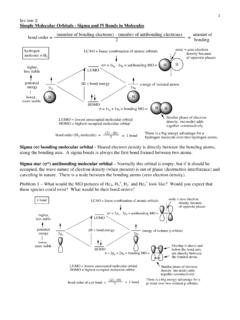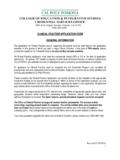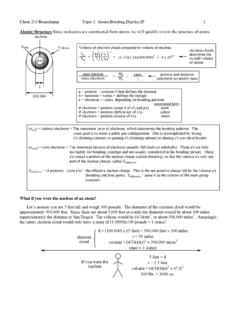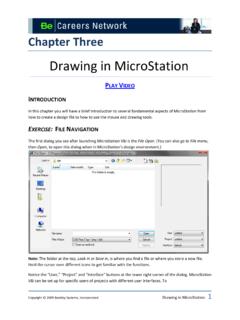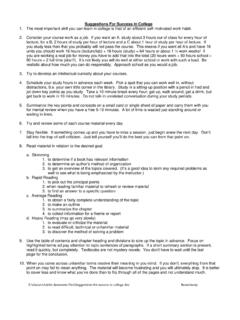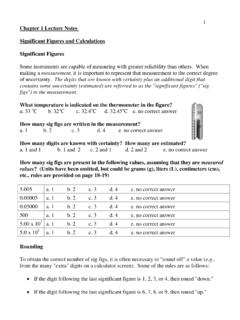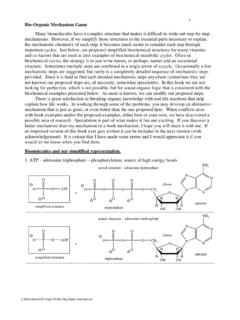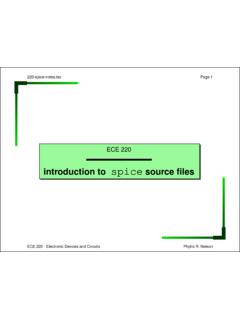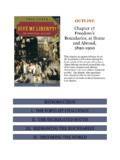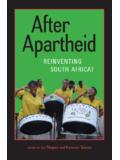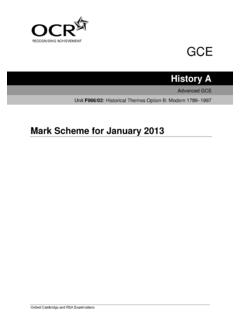Transcription of The Chinese Cultural Revolution: A …
1 1 The Chinese Cultural revolution : a historiographical study In 1965, Mao Zedong believed that his socialist campaign was being threatened by Liu Shaoqi and his comrades who, in Mao s eyes, were traitors to the revolution because they shied away from a genuine mass movement. These veteran revolutionaries who had helped Mao create the People s Republic were now seemingly less committed to Mao s vision. In Mao s eyes the Chinese revolution was losing ground because of party conservatism and large bureaucracy. Mao insisted that many party bureaucrats were taking the capitalist road.
2 Mao called for a wave of criticism against reactionary bourgeois ideology in 1966. Thus began the decade-long Great Proletarian Cultural revolution that would have devastating and far-reaching impact on modern China. The Cultural revolution was one of the most complex events in the history of the Chinese Communist Party. All the Chinese people and institutions were involved and changed forever. Although Mao initiated the movement, once the masses were mobilized the movement gained its own momentum. Mao and his party would continue to manipulate the masses but the masses would find ways to express themselves spontaneously.
3 The Cultural revolution would last from 1966 to 1976 and pass through a number of stages with the majority of the violence occurring in the first two years. As the Chinese masses split into factions, factional struggles affected the course of the Mao would call on students to purge those that had betrayed the revolution . Widespread violence was the Cultural revolution s most unusual aspect and has become the main definition of this time. The People s Republic had suffered brutality but none so widespread as the Cultural revolution . The student revolts that began in Beijing educational institutions quickly led to violence.
4 Libraries were burned to the ground by Red Guards. Anything that was not in line with Marxist-Leninist Mao Zedong Thought was destroyed. Murder was so widespread that trucks patrolled streets in Beijing looking for dead bodies. The suicide rate increased dramatically as people, who attempted to 1 Hong Yung Lee, The Politics of the Chinese Cultural revolution : A Case study (Berkeley: University of California Press, 1978), 1-3. 2escape persecution jumped from buildings, drank insecticide and would lie across tracks in front of oncoming trains or throw themselves in front of cars.
5 Not only did people during the Cultural revolution die from murder and suicide, but also, unnecessarily, from illness due to the refusal to grant medical aid to those considered counter-revolutionaries. Everyone in China was affected; everyone knew someone who had Historians have had to ask: Why did so many Chinese attack each other with such violence? Why would groups of young Chinese , often students as Red Guards, attack their fellow Chinese with such violence and destruction? Early Scholarship In 1978, only a couple years after the end of the Cultural revolution , Hong Yung Lee attempted to write a balanced and comprehensive history of the Cultural revolution in his doctoral study , The Politics of the Chinese Cultural revolution : A Case study .
6 He chose to be thorough in his study rather than provide any new interpretation. He wanted not to overemphasize any particular thesis but rather give a clear view of each stage of the revolution by using primary source Red Guard newspapers. Lee explained the causes of the revolution through four distinct stages. Although the movement began as an elite conflict, Lee explained how it quickly became a conflict between elites and masses. This case study of the Red Guard Movement illustrated the process through which the mass organizations were formed.
7 Lee found that radical organizations came from socially underprivileged sectors and sought to challenge the status quo. When Mao denied the Party of its legitimacy, these groups fought for Lee concentrated on these mass groups and particularly the Red Guards. In conclusion, he attempted to explain the reasons why it was so difficult to suppress the violence of the revolution . During the Cultural revolution , Mao attempted to reduce the gap between the elite and the masses by exploiting the existing social contradictions and shifting his support from one group to another.
8 The mass organizations behaved according to their own interests because they had such a stake in the outcome of the revolution . The mass 2 Anne F. Thurston, Enemies of the People (New York: Alfred A Knopf, 1987), 133-138. 3 Lee, The Politics of the Chinese Cultural revolution , 9-25. 3organizations used coercion and bribery to collect incriminating materials of the opposing group. Alliances based on mutual interests made it difficult to resolve conflicts and control Lee s development of the concept of a social revolution at all levels of society would influence scholars of China.
9 In 1980 Anita Chan, Stanley Rosen and Jonathon Unger published an article titled Students and Class Warfare: The Social Roots of the Red Guard Conflict in Guangzhou in The China Quarterly to address the question: What caused the divisions and violence between student groups during the Cultural revolution ? Comparing statistics taken on the status and class standing of parents of the student activists, Chan, Rosen, and Unger found correlations between parents backgrounds & class backgrounds, and students commitment to activism. They cited the events that happened prior to Cultural revolution as agents in the conflicts.
10 In pre- Cultural revolution China the prospects for upward mobility were narrowing. There was growing competition to get into higher education. In order to make it into a good school, the students had to win political credentials as well as having high grades. Those that could enter the Communist Youth League were required to have good family backgrounds, which meant their parents had to be party cadres. Educational recruitment policies were based on a parent s background in the party. This led to class antagonisms that would transform into Red Guard Although each author independently conducted doctoral research on this issue, they all came to the conclusion that pre- Cultural revolution social tension led to the Red Guard violence.
